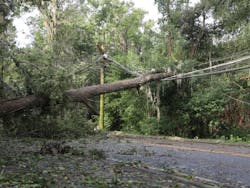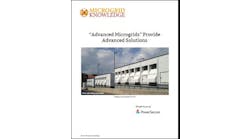The National Association of Regulatory Utility Commissioners (NARUC) has released a report on how distributed energy resources (DERs) and microgrids can improve grid resilience along with a guide state regulators can use to review proposed projects.
By KMH Photovideo/Shutterstock.com
“With more threats to the distribution grid, strategically placing generation resources or energy storage on the distribution system may be the most cost-efficient option in some cases; particularly in remote locations where transmission and distribution lines are difficult to build or maintain,” NARUC said in a report.
DERs as part of microgrids may be able to counter generation issues, including fuel shortages, NARUC said in the report, Advancing Electric System Resilience with Distributed Energy Resources: A Review of State Policies.
The association pointed to several microgrids as examples of how they can be used to improve grid resilience. They include San Diego Gas & Electric’s Borrego Springs microgrid, which uses solar plus storage to serve an isolated area with transmission constraints.
Public DER microgrids can support several key resilience characteristics, including islanding capability, siting at key locations, fuel security, quick ramping, grid services, flexibility and decentralization, according to NARUC.
However, NARUC noted that the lack of an established valuation methodology for resilience makes it hard for state regulators to compare the costs and benefits of microgrids. Also, state retail choice laws, ownership issues, cost allocation and interconnection issues can inhibit microgrid development, NARUC said.
The association also released a companion publication that focuses on key questions and resources related to DERs and grid resilience.
In the second report, NARUC said it expects threats to the electric distribution system to grow more frequent and severe, and new catastrophic threats will emerge with the potential to cause widespread and long-term outages.
NARUC also expects regulated utilities will continue proposing investments to regulators that will affect system resilience.
“Therefore, it is critical for regulators to apply economic analysis methods to resilience investments and to treat resilience as a desired outcome similar to other objectives, such as reliability, emissions goals, and other public policy preferences depending on the state,” NARUC said.
The report provides a roadmap for state regulators reviewing review proposed utility investments in DERs and microgrids. For example, the report offers a series of questions regulators should ask when reviewing projects, such as is the project a cost-effective way to improve resilience and will the project replace traditional solutions.
Learn more about microgrids and DERs at the free Microgrid Knowledge Virtual Conference June 1-3.







